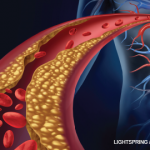“Only discussing safety is a bit unrealistic,” says David G. Borenstein, MD, a rheumatologist with Arthritis and Rheumatism Associates in Washington, D.C., and an editorial board member of The Rheumatologist. “I think one needs to be more sophisticated in regard to the kinds of patients being seen when making a choice as to what is appropriate therapy.”
Tailoring the entire therapy to the individual is key to proper use of all types of NSAIDs, according to the experts. A careful history and physical of both the patient and family to look for heart disease or gastrointestinal concerns is an important first step. The amount of inflammation manifest by the patient is another consideration, as is age and the severity and type of pain. Then decisions can be made on which medication or additional therapies should be prescribed.
“The rheumatologist knows that all NSAIDs can cause many kinds of side effects and they must be used at the lowest possible dose for the shortest possible amount of time,” says Steven B. Abramson, MD, professor of medicine (rheumatology) and pathology at the New York University Medical Center in New York and a member of the ACR Drug Safety Committee.
These side effects are not immutable. Just as proton pump inhibitors can limit gastrointestinal bleeding, some of the cardiovascular risk factors can be mitigated. For example, weight loss and diet changes can lower high blood pressure and diabetes—two major cardiovascular risk factors. Calcium channel-blocking drugs or cholesterol lowering medications may be another consideration.

Limited Options Complicate Therapy
Indeed, with the withdrawal of rofecobix and valdecoxib followed by the recent decision by the Food and Drug Administration to deny marketing approval for the COX-2 inhibitor etoricoxib, the number of options available to the physician has diminished. This may mean the use of multiple medications to address the gastrointestinal and cardiovascular side effects.
“I think that the preference has been to use non-drug means to limit side effects,” says Dr. Borenstein. “What might be new now for clinicians is the fewer choices we will have and with only ‘older drugs’ to select, we will have to make them work like we did a decade ago. The result will be using what is necessary to limit, reverse, or minimize any ill effects from the drugs we need to use to get the patients better.”


